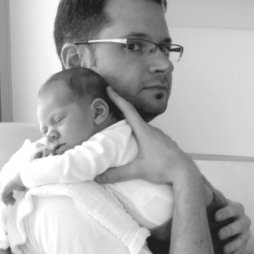Stem Cell Bank
About umbilical cord blood stem cell collecting
When becoming parents, we have to make several decisions instead of our child and we try to provide the most beautiful and healthy life for him/her. We would like to raise the attention of the would-be-parents and grandparents to a new possibility that allows the child – and the whole family – to exploit the advantages of the newest medical technologies. This single possibility is namely the storage of the cord blood stem cells!
What are stem cells?
Stem cells are cells that are able to almost unlimited division and transformation, and which are at the origin of the specialized cells that make up the different tissues and organs of the human organism during the early embryonic stage. The specialized cells loose their capacity for further transformation. However, so called “adult stem cells” remain in mature organisms as well, which have the capacity for further division and transformation. These stem cells can be found in all human organisms where the cells have to be constantly regenerated. They are for instance in muscles, in the skin, and experts found stem cells in the nervous system as well, which are able to produce cells characterizing the given tissue. Stem cells are called regenerative cells, because in a mature adult organism their main task is to regenerate and replenish injured cells. Regenerative medicine uses this property of the stem cells for the treatment of diseases.
Sources of stem cells
Stem cells used in the daily routine of medicine can originate from different sources. Among other sources they can originate from the bone marrow, from the circulating (peripheral) blood or from the umbilical cord blood. The possibilities to collect stem cells from the bone marrow and from the peripheral blood are quite restricted. That is the reason why currently the attention tends mainly towards the new and easily accessible stem cell source, the cord blood. The umbilical cord blood is the blood of the baby and contains a huge quantity of stem cells.
In the uterus, the blood of the embryo takes up the oxygen and the nutrients by circulating through the umbilical cord and the placenta. When a child is born, the connection between the child’s blood circulation and the mother and her womb is interrupted by the cutting of the umbilical cord. The umbilical cord and placenta come out of the uterus after the birth. If the parents do not definitely ask for the collection or the storage of the stem cells from the cord blood at the birth, then this useful and possibly life-saving blood will be destroyed together with the umbilical cord and the placenta which are still considered as being organic biological wastes.
What are the advantages of the cord blood stem cells?
The advantage of the cord blood stem cells is that they are easily and rapidly accessible without any pain or risk.
The great advantage of a reserve of one’s own cord blood stem cells is that it can immediately be used in case of emergency. Thus, the patient does not have to wait for the long process of donor-searching, which can spoil the chances of recovery. It is especially difficult to find suitable donors with the help of community stem cell banks for patients belonging to the minorities. In these cases, the patient has rare tissue antigen properties, so the advantages of the storage of their own stem cells has considerable significance.
The difference between the cord blood stem cells and the adult stem cells, the collection of which is more difficult, is not only that cord blood stem cells are easily accessible and can be collected without any risk, but they also differ in their age. The stem cells of the cord blood are practically “new-born”, so these are very young cell-types having an important capacity of multiplication and they are able to produce numerous cells during their life. Moreover, their genome is theoretically free of any environmental impact. The tissue stem cells grow with us, even though their capacity of division is theoretically unlimited, and the injuries that we suffer during our life have an impact on the genome of the cells.
Another important advantage of the transplant of cord blood stem cells is that in these cases it happens more rarely that the transplanted cells attack the cells of the recipient organism.
The therapeutic use of cord blood stem cells
The medical recommendations concerning the therapeutic use of cord blood stem cells do not differ from the medical recommendations of the therapeutic use of the bone marrow stem cells or of the peripheral blood stem cells. Nowadays, we use the cord blood stem cells for the therapy of certain serious tumorous diseases, especially for the treatment of diseases related to the haematologic system and the immune system.
It is an important fact as well, that the cord blood stem cells can be used for the treatment of the relatives, firstly for the already born child, but – in case of immunologic identity – even for the treatment of another child planned in the future, who happens to born with a disease, and so giving a new hope for recovery. Thus, we can also avoid the encumbrance of the healthy brother or sister to be a donor and to suffer the intervention. Moreover, the period during which the patient has to wait for the transplant is much less.
Stem cell researches
The different therapeutic uses of the stem cells are nowadays in the centre of interest of the scientific world. Numerous scientific researches are in full swing all around the world concerning the medical therapeutic use of cord blood stem cells. It is almost impossible to list how many diseases the scientists are trying to treat with the help of cord blood stem cells. Stem cell therapy can be used for the treatment of heart attack to substitute the dead cardiac muscle cells, in case of the injury of the spinal cord to regenerate the nerve cells, or for the treatment of diabetes to produce insulin-producing cells. Next to the researches mentioned above, scientists are also pursuing researches concerning the treatment of the Alzheimer’s and Parkinson’s diseases with stem cell therapy as well. The results of the researches concerning the treatment of ill animals suffering from myoatrophy with the means of stem cell therapy are also positive. In laboratory circumstances, scientists could produce liver tissue from stem cells. The scientific importance of the usability of the stem cells is also showed by the fact that in 2007 the Medical Nobel Prize has been awarded for scientists working in the field of stem cell research. According to these recognized researches, we can be optimistic, but before the introduction of a new therapeutic method, thoroughly planned researches are needed.
















